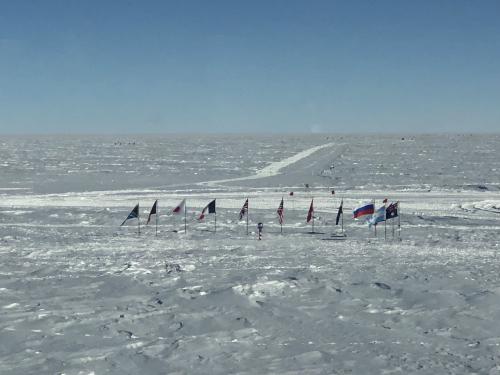In celebration of Antarctica Day (Dec. 1) and my live webcast that we had trouble connecting to because of the satellite, I want to share a brief history of Antarctic discovery.
Sailors have been navigating the Southern Ocean since the early 1800’s and were the first explorers to discover the seventh continent. The voyages were treacherous with some of the roughest waters in the world and small ships that tried to cut through the raging storms.
Ernest Shackleton led many Transantarctic expeditions in the 1900’s and now has a temporary station named after him between McMurdo and the South Pole. Today this station is used as a staging site for field camps.
Shortly after this, Robert Falcon Scott decided to trek to the South Pole. He was, however, disappointed to find that upon reaching the geographic South Pole, Norwegian Roald Amundsen had already staked his flag at the pole. Amundsen was on an expedition to the North Pole at the time, but decided to turn around and try the southern hemisphere when he caught word that the North Pole had already been discovered. Heartbroken, Scott and his team turned around to head back to the coast. Through as series of terrible misfortunes, Scott and every member of his team perished along the way home. Today, the Amundsen-Scott South Pole Station is named after these two men and their exploration.
In 1932, an International Polar YearThe International Polar Year (IPY) is a two year (2007-2009) program of international research and education focused on the Arctic and Antarctic. Click here for more information about IPY. was established where scientists from many different countries came together to collaboration with scientific exploration in polar regions. This was such a success that in 1957, scientists decided to do the same thing with the geophysical sciences. Thus the International Geophysical Year was established with over 60 countries participating in fields such as oceanography, auroras, solar activity, cosmic rays, and many more. This also marked the end of a long period during the Cold War when scientific information was not readily shared. During this year, the Amundsen-Scott Station was erected as the first permanent structure at the South Pole.
The IGY in 1957-1958 led to the creation of the Antarctic Treaty System in 1959. This treaty stated that Antarctica is to be used for scientific investigation, should be treated as an environmental preserve, and will remain free of any military activity. There were 12 initial countries who signed the treaty and their flags remain at the Ceremonial South Pole marker. Since then, 35 additional nations have agreed to sign the treaty.

Starting in 1964, environmental protection acts began to be ratified by members of the Antarctic Treaty. Some of the regulations set in place include: recognizing marine reserves, removing all waste from the continent, and prohibiting individuals from removing any artifacts from Antarctica.


Comments